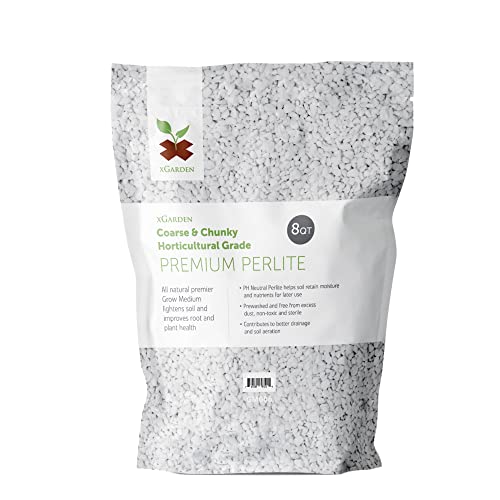Perlite is common in gardening as a mixture in potting soil. You may have found perlite floating in your pot after watering your plants. Why is it rising to the surface and is there something you should do? We've researched this topic and found the answer for you.
Perlite is lightweight and like a bubble or popcorn. When you water your pot, perlite only holds a small amount of water and will rise to the top portion of the soil and sometimes will flow out of the pot. Adding sand and peat to the top of your soil can keep the perlite below the surface.
Why do you need perlite in your soil mix? Does perlite go bad? We'll answer these questions and more! Continue reading this post as we dive into the topic.
Why Perlite Floats To Top Of Soil
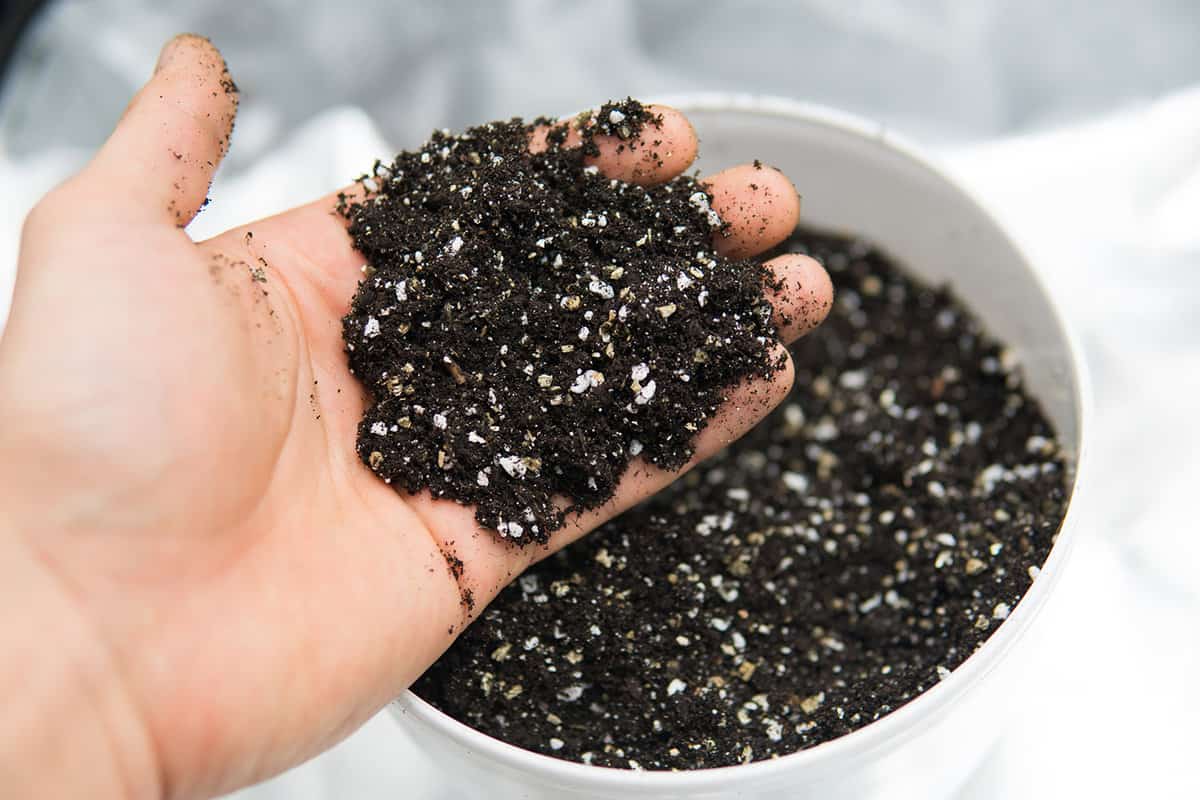
Perlite is lightweight, so it floats or rises to the top of the soil and spills out of the pot when watered. There is no way to stop the perlite from floating on top, but you may try filling the top with other materials to push down the perlite.
According to some users in a forum, they put perlite in the bottom with other soil mixtures, and then they use sand and peat on top of the soil of about 2 to 3 cm. By doing this, they still get the benefits of perlite underneath without floating to the surface.
What Are The Benefits Of Perlite?
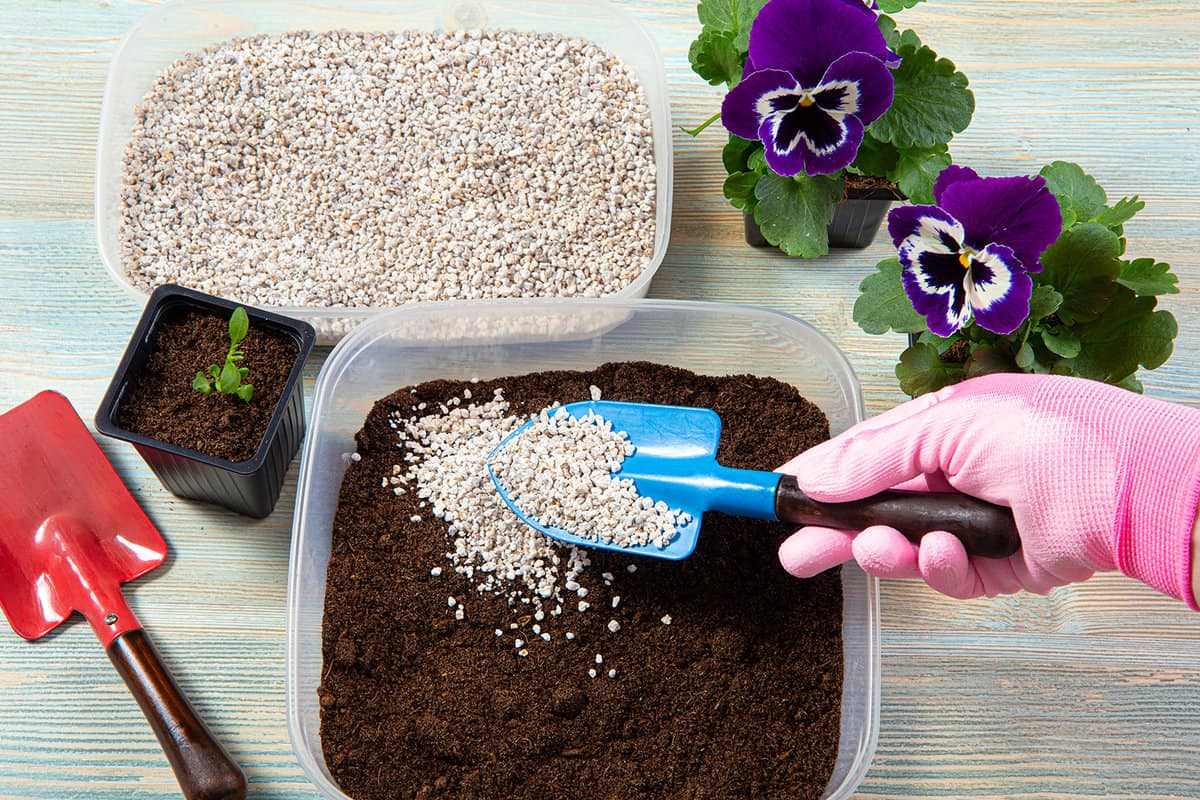
Adding perlite to your potting soil is not a requirement, but there are benefits which are why most potting soil mixes have perlite in them.
What are the benefits of perlite? Let's take a look!
Retention
Perlite retains nutrients and moisture if mixed with other components like peat moss or compost.
Reusable
Perlite does not break down and keeps its form over time. You can reuse it for other plants or in repotting if handled correctly.
Drains Well
Perlite is porous, light, and airy, which is why it drains water well. This is ideal for preventing root rot, diseases, and fungal issues.
Aeration
Perlite's particle looks like a small white foam puff, and its asymmetrical size provides an air path in the soil.
pH Neutral
Perlite is neutral in pH level and holds nutrients well, and doesn't alter the chemical components of acidic or alkaline soil. Perlite has a pH level of 6.6 to 7.5.
Do You Water Perlite?
Although perlite floats when watered, it can also hold water through individual grains. Each grain has small openings where each one can steep the right amount of water.
What Are The Perlite Granule Sizes?
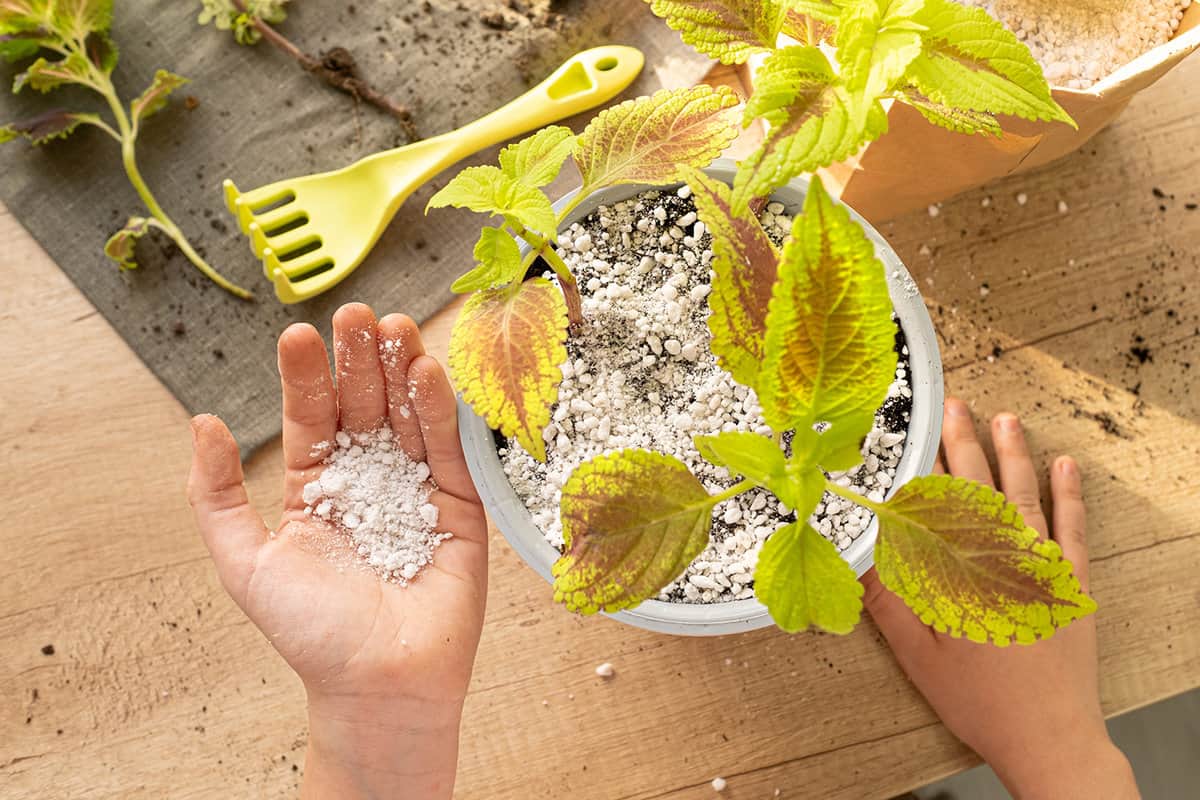
Perlite has four different granule sizes. These are the sizes available:
Extra Coarse Perlite
The extra coarse granule size is about 1-inch and is used to modify garden and raised beds. This granule size should only be mixed with extremely heavy soil.
Click here to check out this extra coarse perlite on Amazon.
Coarse Perlite
The coarse granule size has about 1/2 inch and should only mix in heavy soil.
Click here to check out coarse perlite on Amazon.
Medium
Medium granule sizes are about 1/4 inch to 3/8 inch, in between fine and coarse sizes. These are common in commercial potting soil and ideal for potted plants, hanging baskets, and window boxes.
Click here to check out medium-grade perlite on Amazon.
Fine
Fine granules are about 1/8 inch, perfect for root cuttings and seed starting.
Click here to see fine-grain perlite on Amazon.
Does Perlite Cause Fluoride Burn In Plants?
Perlite contains fluoride, and fluoride can cause discoloration and damage to plants. However, 1ppm fluoride is safe for plants. Different perlite sources have different amounts of fluorite. Check the label regarding the fluoride content.
Does Perlite Have Aluminum?
Perlite is naturally from molten lava cool by a volcano. It contains 13% aluminum oxide and other minerals such as sodium oxide, potassium oxide, magnesium oxide, fluoride, iron oxide, and calcium oxide.
Does Perlite Go Bad?
Perlite doesn't have an expiration date because it is inorganic. It won't deteriorate, break down, or decompose. On top of this, perlite doesn't attract pests or mold either. Because of these factors, perlite never goes bad.
Can You Use Old Perlite?
Since perlite is inorganic and won't expire, you can still use old perlite for your new plants, as long as it goes through the sterilization process to avoid spreading microorganisms like fungi and bacteria from its previous environment.
How To Clean Perlite?
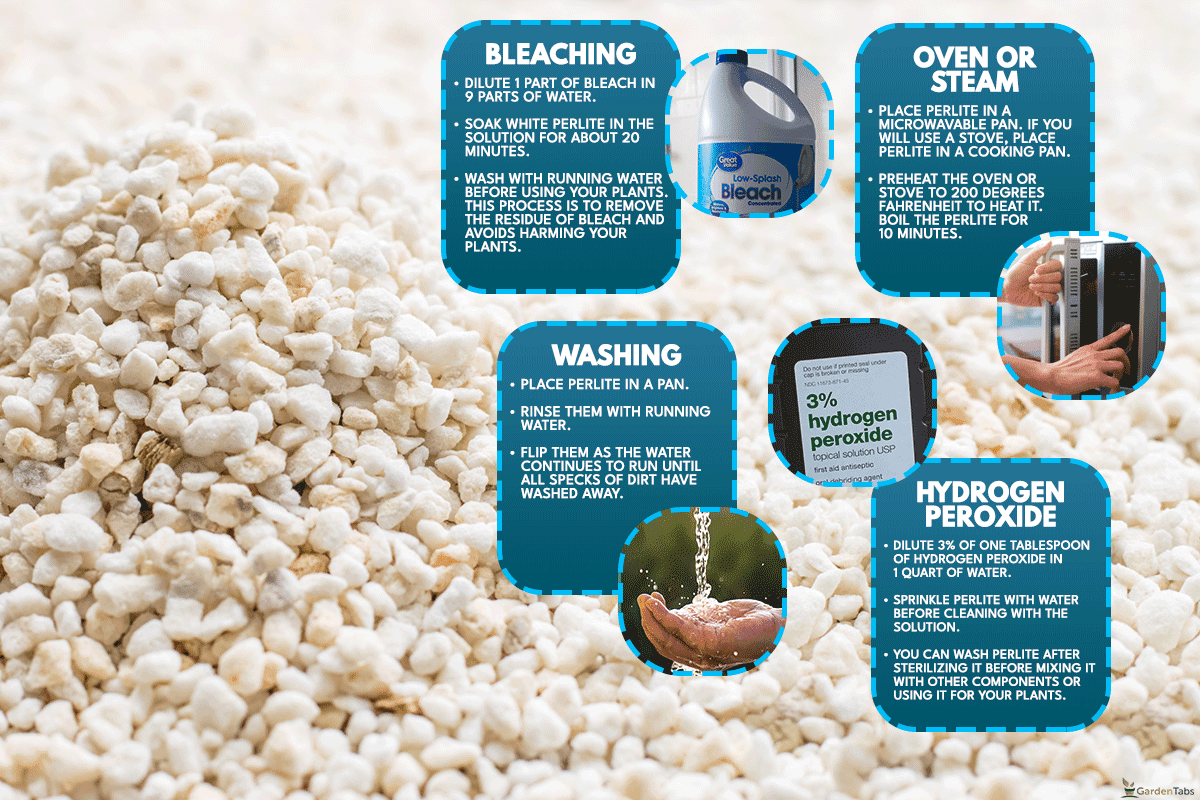
There are several ways to sanitize perlite. Listed below are some of the procedures to clean them:
Bleaching
Here is how to sterilize perlite using bleach:
- Dilute 1 part of bleach in 9 parts of water.
- Soak white perlite in the solution for about 20 minutes.
- Wash with running water before using your plants. This process is to remove the residue of bleach and avoids harming your plants.
Washing
Here is the easy way to clean perlite:
- Place perlite in a pan.
- Rinse them with running water.
- Flip them as the water continues to run until all specks of dirt have washed away.
Hydrogen Peroxide
Steps in cleaning perlite using hydrogen peroxide:
- Dilute 3% of one tablespoon of hydrogen peroxide in 1 quart of water.
- Sprinkle perlite with water before cleaning with the solution.
- You can wash perlite after sterilizing it before mixing it with other components or using it for your plants.
Oven or Steam
Heat can kill microbes, which is why steaming or placing perlite in the oven could help sterilize it.
- Place perlite in a microwavable pan. If you will use a stove, place perlite in a cooking pan.
- Preheat the oven or stove to 200 degrees Fahrenheit to heat it. Boil the perlite for 10 minutes.
Can you put Perlite in Compost For Propagation?
Perlite is a great addition to compost because of its capability to retain moisture and nutrients. It can help to enhance compost in improving the propagation of your cuttings to grow roots.
What Are The Best Perlite To Use?
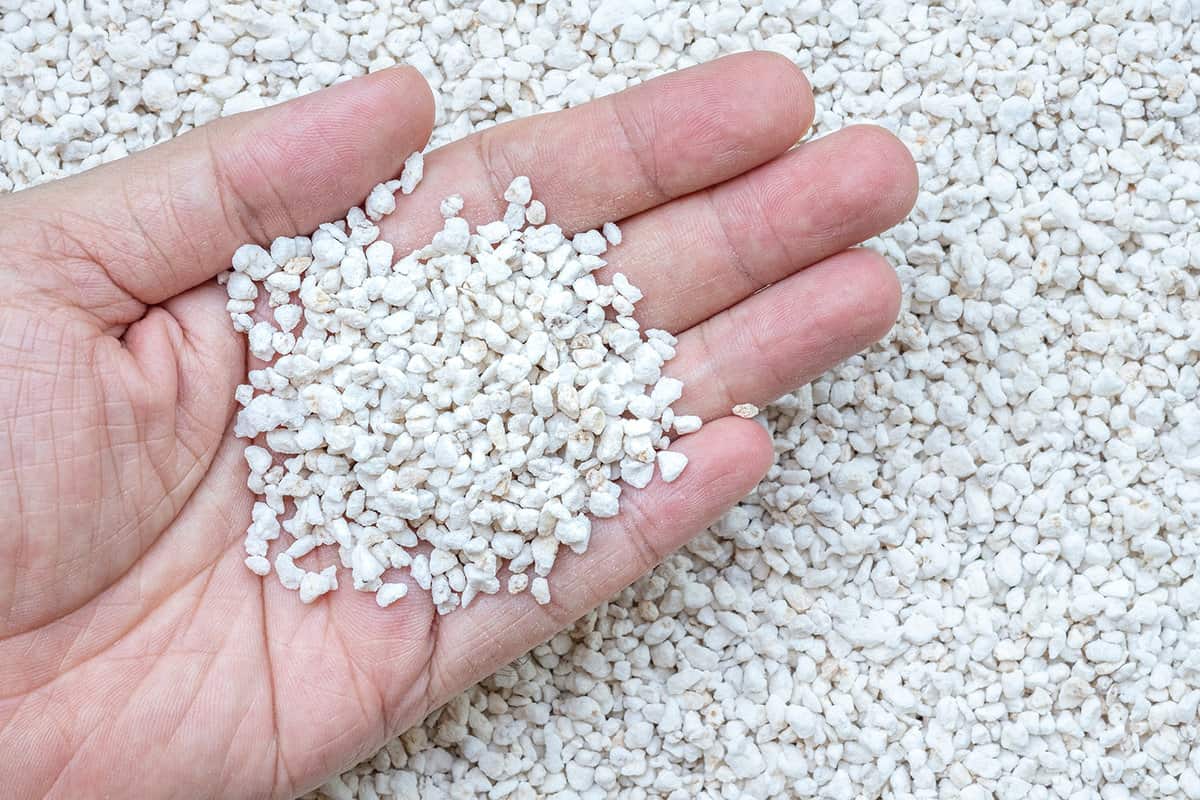
Listed below are some perlite products we recommend for your plants:
Miracle-Gro Perlite
Miracle-Gro Perlite contains plant food that promotes soil compaction and helps in root development. It is lightweight, which is best for root cuttings. Your potted plants will improve water drainage and airflow.
Click here to check out Perlite on Amazon.
Organic Perlite
Organic perlite is ideal for helping aeration in pots and improving drainage. It can prevent soil compaction for better growing conditions. Organic perlite granules have a natural pH level and each granule has bubbles that can hold moisture and nutrients.
Click here to see this organic perlite on Amazon.
Harris Premium Horticultural Perlite
Premium Horticultural Perlite by Harris is non-flammable, non-toxic, odorless, and won't sink or decay. It contains pH neutral, which will not alter the natural pH balance of acid soil. This product helps soil to retain moisture and nutrients while providing aeration and fending off root compaction. It is ideal in soil, bulbs, compost, and more.
Click here to check out this premium horticultural perlite on Amazon.
Rio Hamza Trading Horticultural Perlite
Horticultural Perlite is ideal for potting mixes. It enhances drainage and aeration for plants' growth and strong roots.
Click here to find Horticultural perlite on Amazon.
Perfect Plants Organic Perlite
This product suits your needs for the best growing medium perlite for plants because it contains a mixture of potting mix for maximum results. This organic perlite prevents soil from compacting, and the surface area creates space for root expansion.
Click here to see Perfect Plants Perlite on Amazon.
xGarden Horticultural Grade Premium Perlite
This premium perlite is coarse and chunky, made to improve roots and plants' health. It provides better drainage and soil aeration. This product has pH neutral, non-toxic, and sterile.
Click here to check out this premium perlite on Amazon.
Viagrow Perlite
Viagrow Perlite is ideal for greenhouse propagation. You can mix Viagrow Perlite with natural soil and compost to help young plants to grow healthy and strong.
This product is sterile, clean, non-flammable, odorless, non-toxic, and doesn't shrink; pests and fungi can't destroy perlite. Viagrow Perlite is an ideal substitute for sand and can use in propagation and seed germination.
Click here to see Viagrow Perlite on Amazon.
Summary
Perlite is a helpful add-in for a soil mixture to support retaining nutrients and water. It may be troublesome to see perlite float on the surface every time you water the pots, but there are workarounds that you can do to prevent it, like topping other materials on top.
If you want to learn more about perlite and learn some tips about gardening, you may read these posts:
Vermiculite Vs Perlite Vs Pumice: Pros, Cons, And Differences
Does Perlite Aerate Soil And Absorb Water?
Best Soil Mix For Hanging Baskets [7 Top Options You Should Try!]










